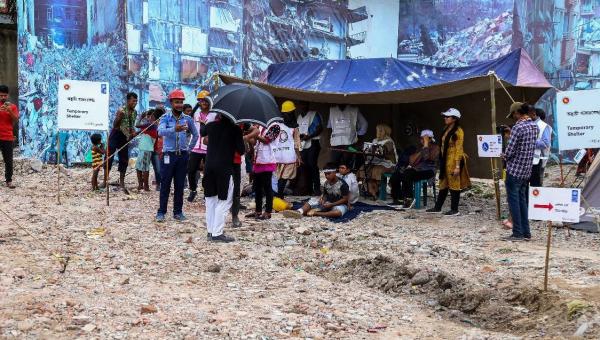CHITTAGONG HILL TRACTS WATERSHED CO-MANAGEMENT ACTIVITY (CHTWCA)
Background
The Chittagong Hill Tracts (CHT), located in the southeast of Bangladesh, comprises of the three Hill Districts: Bandarban, Khagrachari and Rangamati. The region is home to 13 tribal groups (ethnic minorities or Adivasi), in addition to Bengali, and has a population of nearly 1.6 million. Each of the tribal groups retains a unique language, culture, and tradition. The CHT is geographically distinct from most parts of plainland Bangladesh, as characterized by steep, rugged hilly terrain, and diversity. USAID funded ten-year Chittagong Hill Tracts Watershed Co-Management Activity (CHTWCA) is implemented by UNDP under Strengthening Inclusive Development in CHT (SID-CHT) Project of the Ministry of Chittagong Hill Tracts Affairs (MoCHTA). It aims at integrated ecosystem management of forests (headwater Reserved Forests, Protected Areas and Village Common Forests/mauza reserves) and their associated watersheds in partnerships with key stakeholders including local people.
Area of Work
- Agriculture, Food security, and Livelihood promotion.
- Climate Resilience at household and community levels.
- Environment, Forest, and Watershed Co-Management.
- Support to Host Community Affected by Rohingya influx.
- Sustainable Management of Community Development.
- Women’s and Girls’ Empowerment through access and skill education.
- Inclusive Education in CHT.
- Youth Engagement, Skills, and Employment.
- Holistic marketing system.
- Strengthening local government for local economic development.
Significant Achievements
- 226 Village Common Forests (VCF) Management plans prepared.
- 69,306 hectares of forest areas (VCF-14,978 RF-4,445, and PA-49,883 ha)) brought under improved Natural Resource Management (NRM)
- 7 Strategic action plans developed by the Bangladesh Forest Department (BFD)
- 617 communities are participating in managing the Village Common Forests (VCF), Reserve Forests (RF) and Protected Areas (PAs).
- 245,073 (47% female) people received climate-resilient livelihood co-benefits
- 148,362 (45% female) people engaged through conservation awareness-raising events and messaging
- 143 groups or initiatives developed to resolve conflict or the drivers of conflict in Bandarban.
Expected Results
Result 1: Strengthened Ecosystem Governance
Result 2: Resilient Livelihoods with Market Access Improved
Result 3: Reduced Conflicts and Improved Social Cohesion among Communities for Ecosystem Conservation.
Objectives
Strengthened gender-responsive local resilience through an integrated ecosystem management approach of the CHT

 Locations
Locations






